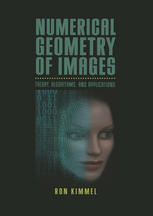

Most ebook files are in PDF format, so you can easily read them using various software such as Foxit Reader or directly on the Google Chrome browser.
Some ebook files are released by publishers in other formats such as .awz, .mobi, .epub, .fb2, etc. You may need to install specific software to read these formats on mobile/PC, such as Calibre.
Please read the tutorial at this link: https://ebookbell.com/faq
We offer FREE conversion to the popular formats you request; however, this may take some time. Therefore, right after payment, please email us, and we will try to provide the service as quickly as possible.
For some exceptional file formats or broken links (if any), please refrain from opening any disputes. Instead, email us first, and we will try to assist within a maximum of 6 hours.
EbookBell Team

4.3
88 reviewsWith the ever-rising volume worldwide of visual content on computers and communication networks, it becomes increasingly important to understand visual processing, to model and evaluate image formation, and to attempt to interpret image content.
Numerical Geometry of Images presents an authoritative examination of new computational methods and algorithms in image processing and analysis. In addition to providing the requisite vocabulary for formulating problems, the book describes and utilizes tools from mathematical morphology, differential geometry, numerical analysis, and calculus of variations. Many applications, such as shape reconstruction, color-image enhancement and segmentation, edge integration, path planning, and calculation invariant signatures are explored.
Topics and features:
* Introduces new concepts in geometric image modeling and image interpretation (computer vision)
* Provides the requisite theoretical basis and progresses to using key tools
* Offers a solution to the face-recognition problem by generalizing principles from texture-mapping methods in computer graphics
* Contains numerous helpful exercises and solutions to facilitate learning
* Presents a new perspective on solving classic problems, as well as classic approaches to solving new problems
* Uses industry-proven variational geometric methods and numerical schemes
With its well-organized structure, clarity of presentation, and intuitive style, this new text/reference expedites a solid grasp of the technical material. Only a good background in geometry, linear algebra, and basic calculus is required. Graduate students and professionals with interests in computational geometry, computer vision, image processing, computer graphics, and algorithms will find the book an invaluable and highly practical learning resource.